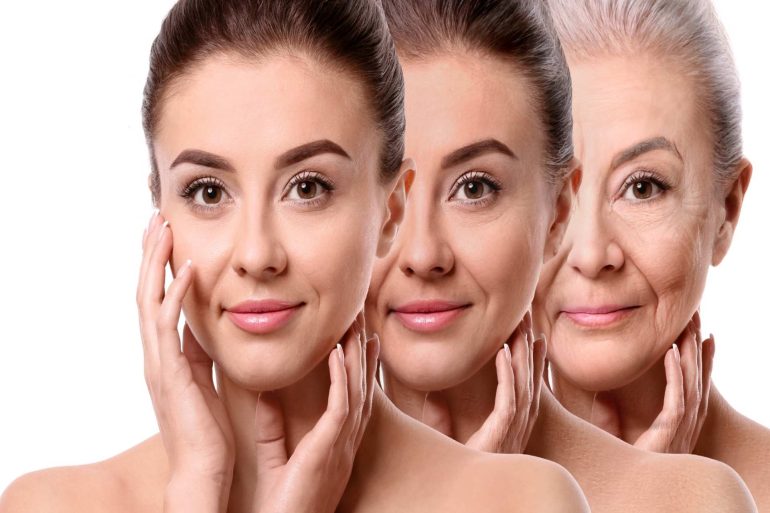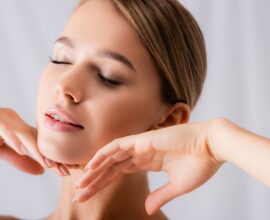Perimenopause, menopause and post-menopause: how to face the three stages
Find out how to face the three stages of menopause serenely
For many women, the coming of menopause represents the beginning of a time of important physical and psychological changes. Here are the natural remedies that help finding a new balance.
As feared as (unfortunately) inevitable, menopause is actually one of the most critical phases in women’s lives. Indeed, the hormonal changes resulting from the natural decline of ovarian function, which usually takes place between the age range from 45 to 55, are often the cause of important physical and psychological symptoms which can negatively impact on normal daily activities, even though just temporarily.
The good news is that typical menopause symptoms, such as hot flashes, sleep disturbances, mood changes and decreased bone density, can be effectively kept under control through targeted supplementation and the adoption of a healthier and conscious lifestyle.
Thus, in a way, the coming of menopause can represent a unique opportunity for a woman to get in touch with her body, learn to understand and best respond to her changed needs and just adopt new habits allowing her to live a fuller and healthier life.
Perimenopause, menopause, post-menopause: how to best face the three stages serenely
Despite the common belief, menopause is not a sudden event that strikes a woman’s life like a bolt out of the blue. The other way around, it is a gradual process extending over a long period that could last for months, if not years, which although the physical and psychological discomforts allows women to adapt gradually and serenely to the end of the fertile period.
More specifically, there are three main phases that identify three different moments of the climacteric (all the phenomena that precede, accompany and follow the termination of the activity of the sexual glands): they are perimenopause, actual menopause, and post-menopause. Each of these stages involves specific needs and challenges that have to be addressed from time to time with the most appropriate ways to significantly contribute improving women’s quality of life and well-being.
Perimenopause, how to deal with the first symptoms
Perimenopause is the phase that precedes the actual menopause and marks the beginning of the gradual transition from the reproductive to the non-reproductive status, which usually takes place several years before. It usually begins at the age of 40-45 and, in some cases, already at the end of the 30s if exist specific genetic characteristics related to the lifestyle adopted throughout life.
During perimenopause, the levels of estrogen (female sex hormone) begin to fluctuate, resulting in symptoms such as menstrual cycle irregularities (either a shortening or lengthening of the menstrual cycle may occur), hot flashes, mood changes, dryness vaginal discomfort, mental blurriness and even dizziness.
That said, it is worth remembering that the decrease of estrogen levels may not generate direct and immediate effects on fertility, therefore it’s advisable to keep using contraceptive methods to avoid potential pregnancy. The gradual nature of these changes makes it possible to intervene right from the start with small but important changes in diet and lifestyle, which can be crucial to face the next phase with more tranquility and balance.
Sports practices like walking, cardiofitness and weight lifting can support the correct functioning of metabolic activity and immune system and, on the other hand, slow down the decrease in bone density that’s physiologically related to hormonal changes. Cardiovascular activity should then be sides by relaxing practices, such as mindfulness and meditation, both valid to help regulating the activity of the nervous system and conveying calm and mental clarity, necessary to have an overall picture of the situation and objectively evaluate the evolution of ongoing hormonal changes.
It is also useful to maintain a well-balanced diet, rich in fiber, complex carbohydrates and proteins capable of maintaining muscle tone and promoting a greater sense of satiety, essential to keep under control the emotional hunger often caused by hormonal changes.
Another valid support comes from natural supplements. Among these are: chasteberry, an excellent antispasmodic that help soothing breast tenderness, cramps of premenstrual syndrome and intense stress that can also cause menstrual irregularity; red clover, a powerful natural phytoestrogen that compensate the estrogen deficiency typical of perimenopause and actual menopause; and passiflora, known for its ability to speed up the recovery of the nervous system thanks to its sedative effect, generated by the flavonoids.
However, if the symptoms of perimenopause are particularly intense and disabling, it may be necessary to consider also the hormone replacement therapy (HRT), which helps to reduce their severity and prepare the body for the actual menopause, coming next. In this case, it is key to rely on your trusted gynecologist who, after a clinical analysis and checking, will be able to prescribe the most suitable integration and pharmacological therapy for the individual situation.
Menopause, how to accept changes
The climacteric then continues with the coming of actual menopause, which biologically coincides with the last spontaneous menstruation, but by scientific convention it is declared so at the twelfth consecutive month without a period. Typically, this occurs between the age range included between 45 and 55, although sometimes there could occur cases of late menopause (over 55 years old) or early menopause (before 45 years old).
What triggers menopause are a series of hormonal changes that originate with perimenopause, including the decline of ovarian reserves, a lower production of estrogen and progesterone hormones and a change in the regulation of the axis ‘hypothalamic-pituitary-ovarian’, which contributes to a further decrease of reproductive hormones.
Also in this case, the change in the physiological balance that occurs within the woman’s body entails symptoms like sudden and intense hot flashes, very frequently accompanied by sweating and redness of the skin, sleep disorders and insomnia, or repeated awakenings at night, anxiety, irritability and sudden changes in mood, vaginal dryness, often sided with a decrease in sexual desire.
Sometimes there is an increase in weight too, referred to the slowdown of the metabolism, with accumulations concentrated mainly around the abdominal area which, if exceeds, could cause severe health problems. Decreased estrogen can affect bone density and increase the risk of osteoporosis.
Although the combination and intensity of these symptoms significantly differ from woman to woman, it is still a very delicate and destabilizing period, especially if one has never suffered from particular hormonal problems during the fertile age.
This is why it is particularly important to maintain an active lifestyle and give up unhealthy eating habits, such as consuming a lot of fried and fatty foods and refined sugars instead of larger quantities of fiber and vegetables, in order to limit the possible weight gain coming with hormonal changes. It could also be useful to consider a supplement based on vitamin D and calcium as these elements tend to decrease with the arrival of menopause – and they’re crucial to maintain bone and muscle health.
Furthermore, there are several natural remedies that can give good support dealing with the upheavals of the climacteric, for example: herbal teas based on sage leaves, a powerful remedy against heat changes; maca root infusions, a nice cure for increasing libido and stabilize the mood; as well as taking a spoon of flaxseed oil in the morning, rich of phytoestrogens capable of simulating the action of natural estrogens which gradually decrease while the menopause advances.
Phytotherapy is another helpful ally that can support this delicate moment with specific preparations such as black cohosh and dong quai, that combined in synergy with chasteberry and red holly extracts and the practice of stress management exercises (like meditation and yoga) can contribute to support women’s well-being.
Some women also benefit from alternative medicine techniques such as acupuncture and acupressure, particularly effective as an emergency remedy during hot flashes. If the symptoms are intense and affect the ability of doing normal daily activities, it is possible to consider the hormone replacement therapy (HRT) with the help of your gynecologist, by integrating the missing hormones with meds (in general estrogen and progesterone).
Post-menopause, how to create and deal with a new balance
With the attenuation of the typical symptoms of menopause, the woman enters the last phase, the post-menopause, that is a stage of adjustment which goes on for the rest of life. Anyway, it is essential to learn how to live as peacefully as possible with the changes that have occurred with the climacteric, to build and deal with a new physical-mental balance.
During this phase it’s key to monitor the general health status with regular checks, including blood pressure and levels of calcium, vitamin D and cholesterol in the blood, as well as maintaining an active lifestyle and a well-balanced diet, asking for the consultation of nutrition professionals if necessary.
It is also worth remembering that menopause is a constantly evolving process, which extends for about a third of a woman’s life, and makes her discover herself again starting from her body. We suggest to see ad experience it as an opportunity to seize rather than as a limit: the body is a wonderful machine, and facing its changes with curiosity is the most constructive way to deal with it serenely!
The program for women in menopause at Acquaforte Thalasso & Spa
Designed to support the well-being of women in one of the most complicated and stressful phases of their lives, the menopause program at Acquaforte Thalasso & Spa of Forte Village, an awarded resort immersed in the uncontaminated nature of Southern Sardinia, combines a personalized thalassotherapy treatment with nutritional advice to soothe and alleviate the typical symptoms of women across perimenopause, menopause and post-menopause.
The program begins with a consultation, followed by a series of clinical basic tests that help the team of therapists and medical specialists to establish the patient’s general health conditions and the results that can realistically be achieved following the program in the short, medium and long term.
There are two packages that can be purchased (4 days or 7 days) which include:
- Specialist medical examination;
- ECG;
- Physical-nutritional assessment and hydration status (BIA);
- Basal metabolic rate calculation;
- Nutritional advice;
- High Performance Method functional evaluation;
- Personalized daily thalassotherapy program;
- “Legs in the sky – Kneipp Course” in high-density saline sea water;
- Marine mud therapy sessions;
- Thalasso massage session in high-density saline sea water;
- Personalized massage and massophysiotherapy treatments.
The 4 or 7 day treatment packages respectively cost €2250 and €3200, not including overnight stay (the minimum stay is 3 or 6 nights in a Deluxe Bungalow). To use this service advance booking is required, just write via email to the address holiday@fortevillage.com or by phone call to (+39)0709218818.
Do you want to take care of your body and experience a fairytale holiday in an authentic paradise? Book your stay at the ForteVillage Resort in Sardinia






